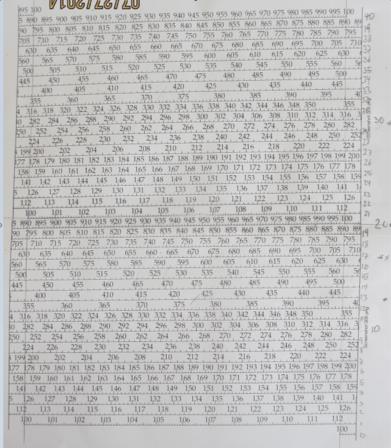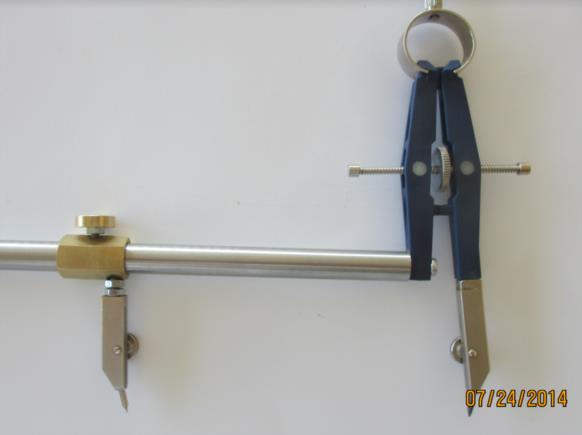
NavList:
A Community Devoted to the Preservation and Practice of Celestial Navigation and Other Methods of Traditional Wayfinding
Re: Longhand Sight Reduction
From: Hanno Ix
Date: 2014 Jul 27, 21:36 -0700
available to those who don't have your mechanical skills to make a real one. It occurred to me that a "Flat Otis" or "Flat Fuller" a la G. Pook's Flat Bygrave could perhaps fill the bill. Here is an experiment with a "Flat Otis" based on P. Murta's log() scale (www.pmurta.com/sliderules). His scale is, of course, meant only for multiplication / division i.e. A*B and A / B. Things like this have been done before. Just google Logaritmal for instance.
Screeshot11 is the worksheet. It repeats the log() scale twice vertically. I don't use a transparent scale as Gary LaPook does. Rather I use a beam compass to transfer one of the factors (see below.) It is not difficult to build a beam compass - see Screenshot 006. However, occasionally you find one on ebay. It sure will be lots cheaper ( abt $50 ) than an Otis or a Fuller! Note that it should have coarse and fine adjustment.
Let's describe the use by an example: y = A * B; A = 4233; B=6765:
1. Extend the compass from 100 to A = 4233; see Screenshot 002 / 003.
2. Read and memorize the line number of A. It is 13. See Screenshot 011.
From: Hanno Ix
Date: 2014 Jul 27, 21:36 -0700
Francis,
I have been thinking of how to make the Otis's - or even the Fuller's - benefits2. Read and memorize the line number of A. It is 13. See Screenshot 011.
3. Find B= 6765 and make it the center of a circle with A as a radius. Do not draw it yet.
See Screenshot 004.
4. Read the line nr of B. It is 17. See Screenshot 011 again.
The sum of line nr of A (13) and line nr of B (17) is 30.
This will be the line nr of the result y.
The sum of line nr of A (13) and line nr of B (17) is 30.
This will be the line nr of the result y.
5. Draw the circle with center B and radius A where it crosses line nr 30.
Read y = 2866. See Screenshot 005. The exact 4-digit value is 2864.
Easy, isn't it? I believe the error stems from the way the 2 scales are glued together at line nr 20. Maybe there are also small distortions in the scales. Also, I found this particular scale difficult to read because some bars of the same size indicate different numerical steps. Most of all one would need a test for the accuracy of the scale. This experiment invites more work on the concept, though.
Hope you liked this!
Hanno
On Sun, Jul 27, 2014 at 2:26 PM, Hanno Ix <NoReply_HannoIx@fer3.com> wrote:
scales that would pass muster. One list member who makes very, very accurate scales is Robin Start. Another one is Peter Murta who has made a scale for the Otis but that one is a log() scale. I might try my hand on making scales in the future. But that would not help you right now.Francis,I have no program, or rather I have no experience with programs I have, to make
Hanno












